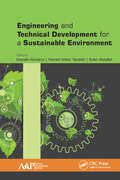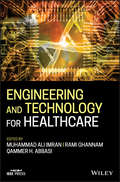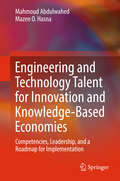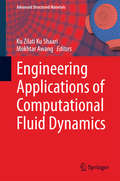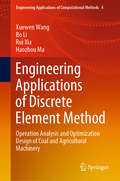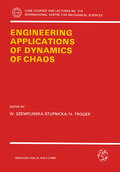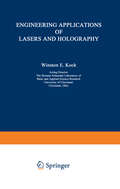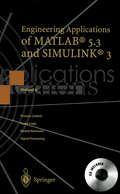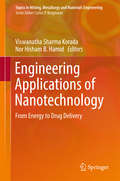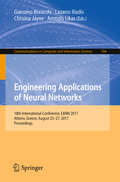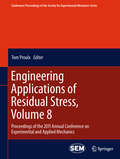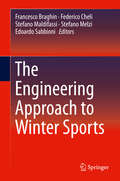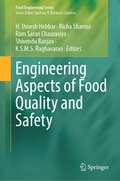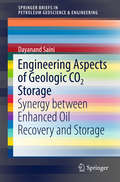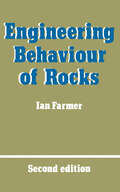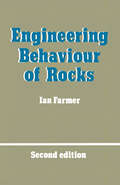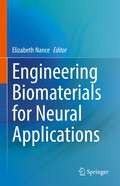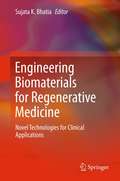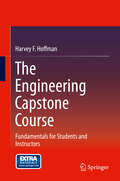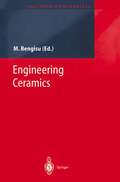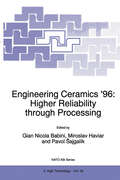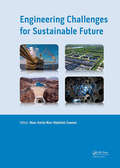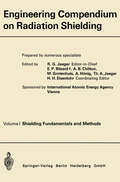- Table View
- List View
Engineering and Technical Development for a Sustainable Environment
by Dzaraini Kamarun Ramlah Mohd Tajuddin Bulan AbdullahThis volume covers a diverse array of alternative technologies and their development with particular attention to the utilization of bioresources for the achievement of a sustainable environment. The book presents a selection of alternative technologies being used in developing and developed countries that can be indigenous to the region, cost-effective, and often driven by dominant societal interest and geographical status. Several engineering and technological processes are included to mark their importance in product performance and preservation of the environment. Topics cover: • strategies for the management of rain and ground water for consumption • wastewater treatment using indigenous techniques of phytoremediation • scientific and engineering approaches to the prevention of flood and landslides in the tropics • wind power generation • soil evaluation of contamination due to heavy metals • green and sustainable building approaches • bioethanol production • energy conservation techniques Refreshing and informative, Engineering and Technical Development for a Sustainable Environment revisits conventional approaches of managing natural agents (such as wind, rain and groundwater resources as well as wastewater treatment) in light of current sustainableoriented techniques using modern scientific concepts and strategies. It presents in-depth evaluations and analyses using systematic up-to-date scientific and engineering tools.
Engineering and Technology for Healthcare (Wiley - IEEE)
by Muhammad Ali Imran Qammer H. Abbasi Rami GhannamInnovation in healthcare is currently a “hot” topic. Innovation allows us to think differently, to take risks and to develop ideas that are far better than existing solutions. Currently, there is no single book that covers all topics related to microelectronics, sensors, data, system integration and healthcare technology assessment in one reference. This book aims to critically evaluate current state-of-the-art technologies and provide readers with insights into developing new solutions. With contributions from a fully international team of experts across electrical engineering and biomedical fields, the book discusses how advances in sensing technology, computer science, communications systems and proteomics/genomics are influencing healthcare technology today.
Engineering and Technology for Healthcare (Wiley - IEEE)
by Muhammad Ali Imran Qammer H. Abbasi Rami GhannamInnovation in healthcare is currently a “hot” topic. Innovation allows us to think differently, to take risks and to develop ideas that are far better than existing solutions. Currently, there is no single book that covers all topics related to microelectronics, sensors, data, system integration and healthcare technology assessment in one reference. This book aims to critically evaluate current state-of-the-art technologies and provide readers with insights into developing new solutions. With contributions from a fully international team of experts across electrical engineering and biomedical fields, the book discusses how advances in sensing technology, computer science, communications systems and proteomics/genomics are influencing healthcare technology today.
Engineering and Technology Talent for Innovation and Knowledge-Based Economies: Competencies, Leadership, and a Roadmap for Implementation
by Mahmoud Abdulwahed Mazen O. HasnaThis book introduces and analyzes the models for engineering leadership and competency skills, as well as frameworks for industry-academia collaboration and is appropriate for students, researchers, and professionals interested in continuous professional development. The authors look at the organizational structures of engineering education in knowledge-based economies and examine the role of innovation and how it is encouraged in schools. It also provides a methodological framework and toolkit for investigating the needs of engineering and technology skills in national contexts. A detailed empirical case study is included that examines the leadership competencies that are needed in knowledge-based economies and how one university encourages these in their program. The book concludes with conceptual modeling and proposals of specific organizational structures for implementation in engineering schools, in order to enable the development of necessary skills for future engineering graduates.
Engineering Applications of Computational Fluid Dynamics (Advanced Structured Materials #44)
by Ku Zilati Ku Shaari Mokhtar AwangThis volume presents the results of Computational Fluid Dynamics (CFD) analysis that can be used for conceptual studies of product design, detail product development, process troubleshooting. It demonstrates the benefit of CFD modeling as a cost saving, timely, safe and easy to scale-up methodology.
Engineering Applications of Discrete Element Method: Operation Analysis and Optimization Design of Coal and Agricultural Machinery (Engineering Applications of Computational Methods #4)
by Xuewen Wang Bo Li Rui Xia Haozhou MaThis book introduces the engineering application of the discrete element method (DEM), especially the simulation analysis of the typical equipment (scraper conveyor, coal silos, subsoiler) in the coal and agricultural machinery. In this book, the DEM is applied to build rigid and loose coupling model, and the kinematic effect of the bulk materials, the mechanical effect of the interaction between the bulk materials, and the mechanical equipment in the operation process of the relevant equipment are studied. On this basis, the optimization design strategy of the relevant structure is proposed. This book effectively promotes the application of DEM in engineering, analyzes the operation state, failure mechanism, and operation effect of related equipment in operation, and provides theoretical basis for the optimal design of equipment. The book is intended for undergraduate and graduate students who are interested in mechanical engineering, researchers investigating coal and agricultural machinery, and engineers working on designing related equipments.
Engineering Applications of Dynamics of Chaos (CISM International Centre for Mechanical Sciences #319)
by W. Szemplinska-Stupnicka H. TrogerThe treatment of chaotic dynamics in mathematics and physics during last two decades has led to a number of new concepts for the investigation of complex behavior in nonlinear dynamical processes. The aim the CISM course Engineering Applications of Dynamics of Chaos of which this is the proceedings volume was to make these concepts available to engineers and applied scientists possessing only such modest knowledges in mathematics which are usual for engineers, for example graduating from a Technical University. The contents of the articles contributed by leading experts in this field cover not only theoretical foundations and algorithmic and computational aspects but also applications to engineering problems. In the first article an introduction into the basic concepts for the investigation of chaotic behavior of dynamical systems is given which is followed in the second article by an extensive treatment of approximative analytical methods to determine the critical parameter values describing the onset of chaos. The important relation between chaotic dynamics and the phenomenon of turbulence is treated in the third article by studying instabilities various fluid flows. In this contribution also an introduction into interesting phenomenon of pattern formation is given. The fourth and fifth articles present various applications to nonlinear oscillations including roll motions of ships, rattling oscillations in gear boxes, tumbling oscillations of satellites, flutter motions of fluid carrying pipes and vibrations of robot arms. In the final article a short treatment of hyperchaos is given.
Engineering Applications of Lasers and Holography (Optical Physics and Engineering)
by Winston KockThis book is intended for upperclass college students as an introduction to the growing field of coherent optics and to the increasing number of its applications, and also for those versed in other fields who wish to gain per spective and insight without detailed calculations. It is an outgrowth of the author's Science Study Series book Lasers and HolographY. * Besides being an updated and expanded version of that book, it includes discussions of numerous recent applications. It differs in its slightly higher analytical level and in the inclusion oflarge numbers of references, which enable the reader to obtain further information on subjects of interest to him. The level was selected to match the capabilities of students in their middle college years so as to permit them to make an early assessment of possible career interests in any of the many interdisciplinary fields now embracing the technologies of modern optics. It is hoped that the book can be used (as has occurred rather extensively with another of the author's Science Study Series books, Sound Waves and Light Wavest) as an auxiliary reading assignment for students in various disciplines. The author strongly believes that the promise of continued growth in this field, as evidenced by the extensive participation in technology develop ments by industry, both within the U. S. and abroad, identifies the subject as * Doubleday, 1969 (hard cover and paperback).
Engineering Applications of MATLAB® 5.3 and SIMULINK® 3: Translated from the French by Mohand Mokhtari, Michel Marie, Cécile Davy and Martine Neveu
by Mohand Mokhtari Michel MarieWritten in two parts, the first revises the ideas and theoretical bases necessary for a good understanding of the techniques used in the second, which deals with applications of MATLAB(R) and SIMULINK(R) in process control and digital signal processing. Each application is treated through various techniques including the classical methods of automation and of deterministic and random digital processing using fuzzy logic and neural networks. The preceding mathematical study of the physical processes goes from finding the equations to editing the analogical model. The following SIMULINK(R) toolbox functions and blocks have been used: Control System, Signal Processing, Neural Network and Fuzzy Logic.
Engineering Applications of Nanotechnology: From Energy to Drug Delivery (Topics in Mining, Metallurgy and Materials Engineering)
by Viswanatha Sharma Korada Nor Hisham B HamidThis book focuses on the use of nanotechnology in several fields of engineering. Among others, the reader will find valuable information as to how nanotechnology can aid in extending the life of component materials exposed to corrosive atmospheres, in thermal fluid energy conversion processes, anti-reflection coatings on photovoltaic cells to yield enhanced output from solar cells, in connection with friction and wear reduction in automobiles, and buoyancy suppression in free convective heat transfer. Moreover, this unique resource presents the latest research on nanoscale transport phenomena and concludes with a look at likely future trends.
Engineering Applications of Neural Networks: 18th International Conference, EANN 2017, Athens, Greece, August 25–27, 2017, Proceedings (Communications in Computer and Information Science #744)
by Giacomo Boracchi Lazaros Iliadis Chrisina Jayne Aristidis LikasThis book constitutes the refereed proceedings of the 18th International Conference on Engineering Applications of Neural Networks, EANN 2017, held in Athens, Greece, in August 2017. The 40 revised full papers and 5 revised short papers presented were carefully reviewed and selected from 83 submissions. The papers cover the topics of deep learning, convolutional neural networks, image processing, pattern recognition, recommendation systems, machine learning, and applications of Artificial Neural Networks (ANN) applications in engineering, 5G telecommunication networks, and audio signal processing. The volume also includes papers presented at the 6th Mining Humanistic Data Workshop (MHDW 2017) and the 2nd Workshop on 5G-Putting Intelligence to the Network Edge (5G-PINE).
Engineering Applications of Residual Stress, Volume 8: Proceedings of the 2011 Annual Conference on Experimental and Applied Mechanics (Conference Proceedings of the Society for Experimental Mechanics Series #8)
by Tom ProulxEngineering Applications of Residual Stress represents one of eight volumes of technical papers presented at the Society for Experimental Mechanics Annual Conference on Experimental and Applied Mechanics, held at Uncasville, Connecticut, June 13-16, 2011. The full set of proceedings also includes volumes on Dynamic Behavior of Materials, Mechanics of Biological Systems and Materials, Mechanics of Time-Dependent Materials and Processes in Conventional and Multifunctional Materials, MEMS and Nanotechnology; Optical Measurements, Modeling and, Metrology; Experimental and Applied Mechanics, and Thermomechanics and Infra-Red Imaging.
The Engineering Approach to Winter Sports
by Francesco Braghin Federico Cheli Stefano Maldifassi Stefano Melzi Edoardo SabbioniThe Engineering Approach to Winter Sports presents the state-of-the-art research in the field of winter sports in a harmonized and comprehensive way for a diverse audience of engineers, equipment and facilities designers, and materials scientists. The book examines the physics and chemistry of snow and ice with particular focus on the interaction (friction) between sports equipment and snow/ice, how it is influenced by environmental factors, such as temperature and pressure, as well as by contaminants and how it can be modified through the use of ski waxes or the microtextures of blades or ski soles. The authors also cover, in turn, the different disciplines in winter sports: skiing (both alpine and cross country), skating and jumping, bob sledding and skeleton, hockey and curling, with attention given to both equipment design and on the simulation of gesture and track optimization.
Engineering Aspects of Food Quality and Safety (Food Engineering Series)
by H. Umesh Hebbar Richa Sharma Ram Saran Chaurasiya Shivendu Ranjan K. S. M. S. RaghavaraoEngineering Aspects of Food Quality and Safety aims to fill the knowledge gap in current technological advances and methods for food safety and quality, dedicating entire sections to analytical techniques from quality testing to packaging, post-harvest methods from product utilization to storage to chemical engineering principles and pre-harvest interventions from genetic engineering and mechanization to the links between pre-and-post harvest techniques. Throughout the book, global policy perspectives are taken into account. An introductory section is also included to cover the role of food processing and engineering in food quality and safety improvement. Encompassing all of the major applications and challenges involved in the engineering aspects of food safety and quality in one source, this work is incredibly valuable to a wide range of food engineers, scientists, and industry professionals involved in the engineering, processing and packaging of both novel and traditional foods. This text provides a detailed overview of the newest methods and advanced technologies used in the improvement of quality and safety in foods. The processes and methods described in this book are applicable to many areas of the food industry including pre-harvest and post-harvest technology, food machinery and product formulation. Featuring contributions from prominent food scientists and engineers across the globe, this work contains detailed coverage of the latest advances in genetic and chemical engineering, mechanization, thermal and non-thermal processing, automation, computational tools, packaging and waste management. The latest analytical techniques are also covered, including chapters dedicated to in-line monitoring, nanosensors, rapid testing kits and E-sensors. Maintaining a high standard of safety for consumers in foods is an interdisciplinary effort involving biologists, chemists, nutritionists, chemical engineers, mechanical engineers and genetic engineers among others. All of these experts will find this book to be a singular source encompassing all of the major current advances in food safety engineering and processing.
Engineering Aspects of Geologic CO2 Storage: Synergy between Enhanced Oil Recovery and Storage (SpringerBriefs in Petroleum Geoscience & Engineering)
by Dayanand SainiThis timely book explores the lessons learned in and potentials of injecting supercritical CO2 into depleted oil and gas reservoirs, in order to maximize both hydrocarbon recovery and the storage capacities of injected CO2.The author provides a detailed discussion of key engineering parameters of simultaneous CO2 enhanced oil recovery and CO2 storage in depleted hydrocarbon reservoirs. These include candidate site selection, CO2 oil miscibility, maximizing CO2-storage capacity in enhanced oil recovery operations, well configurations, and cap and reservoir rock integrity. The book will help practicing professionals devise strategies to curb greenhouse gas emissions from the use of fossil fuels for energy production via geologic CO2 storage, while developing CO2 injection as an economically viable and environmentally sensible business model for hydrocarbon exploration and production in a low carbon economy.
Engineering Behaviour of Rocks
by Ian W. FarmerThe first edition of this book was received more kindly than it deserved by some, and with some scepticism by others. It set out to present a simple, concise and reasonably comprehensive introduction to some of the theoretical and empirical criteria which may be used to define rock as a structural material. The objectives - reinforced by the change in title - remain the same, but the approach has been changed considerably and only one or two sections have been retained from the first edition. The particular aim in this edition is to provide a description of the mechanical behaviour of rocks, based firmly upon experimental data, which can be used to explain how rocks deform, fracture and yield, and to show how this knowledge can be used in design. The major emphasis is on the behaviour of rocks as materials, although in the later chapters the behaviour of discontinuities in rocks, and the way in which this can affect the behaviour of rock masses, is considered. If this edition is an improvement on the first edition it reflects the debt lowe to numerous people who have attempted to explain the rudiments of the subject to me. I should like to thank Peter Attewell and Roy Scott in particular. I should also like to thank Tony Price and Mike Gilbert whose work at Newcastle I have used shamelessly.
Engineering Behaviour of Rocks
by Ian W. FarmerThe first edition of this book was received more kindly than it deserved by some, and with some scepticism by others. It set out to present a simple, concise and reasonably comprehensive introduction to some of the theoretical and empirical criteria which may be used to define rock as a structural material. The objectives - reinforced by the change in title - remain the same, but the approach has been changed considerably and only one or two sections have been retained from the first edition. The particular aim in this edition is to provide a description of the mechanical behaviour of rocks, based firmly upon experimental data, which can be used to explain how rocks deform, fracture and yield, and to show how this knowledge can be used in design. The major emphasis is on the behaviour of rocks as materials, although in the later chapters the behaviour of discontinuities in rocks, and the way in of rock masses, is considered. which this can affect the behaviour If this edition is an improvement on the first edition it reflects the debt lowe to numerous people who have attempted to explain the rudiments of the subject to me. I should like to thank Peter Attewell and Roy Scott in particular. I should also like to thank Tony Price and Mike Gilbert whose work at Newcastle I have used shamelessly.
Engineering Biomaterials for Neural Applications
by Elizabeth NanceThis contributed volume explores the ways in which researchers engineer new biomaterials for the challenging problems of the peripheral and central nervous systems. These biomaterials are uniquely positioned for use in creating in vitro models of injury and disease, testing therapeutic treatments, understanding neural development, and mapping the multi-scalar environment of the brain. This book informs readers from biology, chemistry, materials science, engineering, and neuroscience on cutting edge research in engineering technologies, from fundamental material development through pre-clinical studies. The book also highlights target applications in three areas of research: (1) engineering neural models and materials, (2) probing biological underpinnings of neurological function and disease, and (3) designing therapeutic and diagnostic treatments for neurological disease.
Engineering Biomaterials for Regenerative Medicine: Novel Technologies for Clinical Applications
by Sujata K. BhatiaRegeneration of tissues and organs remains one of the great challenges of clinical medicine, and physicians are constantly seeking better methods for tissue repair and replacement. Tissue engineering and regenerative medicine have been investigated for virtually every organ system in the human body, and progress is made possible by advances in materials science, polymer chemistry, and molecular biology. This book reviews the current status of biomaterials for regenerative medicine, and highlights advances in both basic science and clinical practice. The latest methods for regulating the biological and chemical composition of biomaterials are described, together with techniques for modulating mechanical properties of engineered constructs. Contributors delineate methods for guiding the host response to implantable materials, and explain the use of biologically-inspired materials for optimal biological functionality and compatibility. The book culminates in a discussion of the clinical applications of regenerative medicine. By integrating engineering and clinical medicine, Engineering Biomaterials for Regenerative Medicine examines how tissue engineering and regenerative medicine can be translated into successful therapies to bridge the gap between laboratory and clinic. The book will aid materials scientists and engineers in identifying research priorities to fulfill clinical needs, and will also enable physicians to understand novel biomaterials that are emerging in the clinic. This integrated approach also gives engineering students a sense of the excitement and relevance of materials science in the development of novel therapeutic strategies.
The Engineering Capstone Course: Fundamentals for Students and Instructors
by Harvey F. HoffmanThis essential book takes students and instructors through steps undertaken in a start-to-finish engineering project as conceived and presented in the engineering capstone course. The learning experience follows an industry model to prepare students to recognize a need for a product or service, create and work in a team; identify competition, patent overlap, and necessary resources, generate a project proposal that accounts for business issues, prepare a design, develop and fabricate the product or service, develop a test plan to evaluate the product or service, and prepare and deliver a final report and presentation. Throughout the book, students are asked to examine the business viability aspects of the project. The Engineering Capstone Course: Fundamentals for Students and Instructors emphasizes that a design must meet a set of realistic technical specifications and constraints including examination of attendant economics, environmental needs, sustainability, manufacturability, health and safety, governmental regulations, industry standards, and social and political constraints. The book is ideal for instructors teaching, or students working through, the capstone course.
Engineering Ceramics (Engineering Materials)
by M. BengisuA handy reference for technicians who want to understand the nature, properties and applications, of engineering ceramics. The book meets the needs of those working in the ceramics industry, as well as of technicians and engineers involved in the application of ceramic materials.
Engineering Ceramics ’96: Higher Reliability through Processing (NATO Science Partnership Subseries: 3 #25)
by G. N. Babini Miroslav Haviar Pavol SajgalíkDespite the significant progress, which has been made in developing of ceramic materials desired for engineering applications, their mass production is still not on expected level. Among the key factors hindering higher exploitation of these materials the problems in processing were identified. The processing comprises powder production, mixing techniques, forming, and sintering. All of them are equally important and all of them can introduce defects into the material. Besides improvement in processing, the properties of ceramic materials can be considerably improved by the creation of composites. Composites formed at micro or macro level are able to form more flaw-tolerant material. Considerable research activities, working on above mentioned phenomena are in progress at industrial laboratories as well as other research centres. This volume presents the contributions to the Advanced Research Workshop "Engineering Ceramics '96" with 65 participants from 21 countries held on 12th - 15th May 1996 at Smolenice Castle, Slovakia, the conference site of Slovak Academy of Sciences. The book covers research activities on engineering ceramic materials and gives an overview with respect to recent developments.
Engineering Challenges for Sustainable Future: Proceedings of the 3rd International Conference on Civil, Offshore and Environmental Engineering (ICCOEE 2016, Malaysia, 15-17 Aug 2016)
by Noor Amila Wan Abdullah ZawawiEngineering Challenges for Sustainable Future contains the papers presented at the 3rd International Conference on Civil, Offshore & Environmental Engineering (ICCOEE2016, Kuala Lumpur, Malaysia, 15-17 August 2016), under the banner of World Engineering, Science & Technology Congress (ESTCON2016). The ICCOEE series of conferences started in Kuala Lumpur, Malaysia 2012, and the second event of the series took place in Kuala Lumpur, Malaysia 2014. This conference series deals with the civil, offshore & environmental engineering field, addressing the following topics:• Environmental and Water Resources Engineering• Coastal and Offshore Engineering• Structures and Materials• Construction and Project Management• Highway, Geotechnical and Transportation Engineering and Geo-informatics This book is an essential reading for academic, engineers and all professionals involved in the area of civil, offshore and environmental engineering.
Engineering Challenges for Sustainable Future: Proceedings of the 3rd International Conference on Civil, Offshore and Environmental Engineering (ICCOEE 2016, Malaysia, 15-17 Aug 2016)
by Noor Amila Wan Abdullah ZawawiEngineering Challenges for Sustainable Future contains the papers presented at the 3rd International Conference on Civil, Offshore & Environmental Engineering (ICCOEE2016, Kuala Lumpur, Malaysia, 15-17 August 2016), under the banner of World Engineering, Science & Technology Congress (ESTCON2016). The ICCOEE series of conferences started in Kuala Lumpur, Malaysia 2012, and the second event of the series took place in Kuala Lumpur, Malaysia 2014. This conference series deals with the civil, offshore & environmental engineering field, addressing the following topics:• Environmental and Water Resources Engineering• Coastal and Offshore Engineering• Structures and Materials• Construction and Project Management• Highway, Geotechnical and Transportation Engineering and Geo-informatics This book is an essential reading for academic, engineers and all professionals involved in the area of civil, offshore and environmental engineering.
Engineering Compendium on Radiation Shielding: Volume I: Shielding Fundamentals and Methods
by International Atomic Energy AgencyThe need has arisen for a comprehensive handbook for engineers faced with problems of radiation shielding design. Although there are several excellent books on shielding, they either do not give enough consideration to the many practical design problems, or are limited to special aspects of the subject. Recognizing the universal need, the International Atomic Energy Agency decided to sponsor the publication ofthe present Engineering Compendium on Radiation Shield ing. At the first editorial discussions it was agreed that, if such a book were to be undertaken, it would be appropriate not only to create a useful design tool for the practising engineer but also to include well-referenced basic data for the research worker. Although trying to keep the book down to a reasonable size, the editors have aimed at a complete presentation of the subject, covering and linking both the tech nology and the science of shielding. Efforts to make terms and definitions consistent throughout have been only partially successful, owing to the continuing development of new ideas. However, inconsisten cies that could not be eliminated are identified whenever possible.
